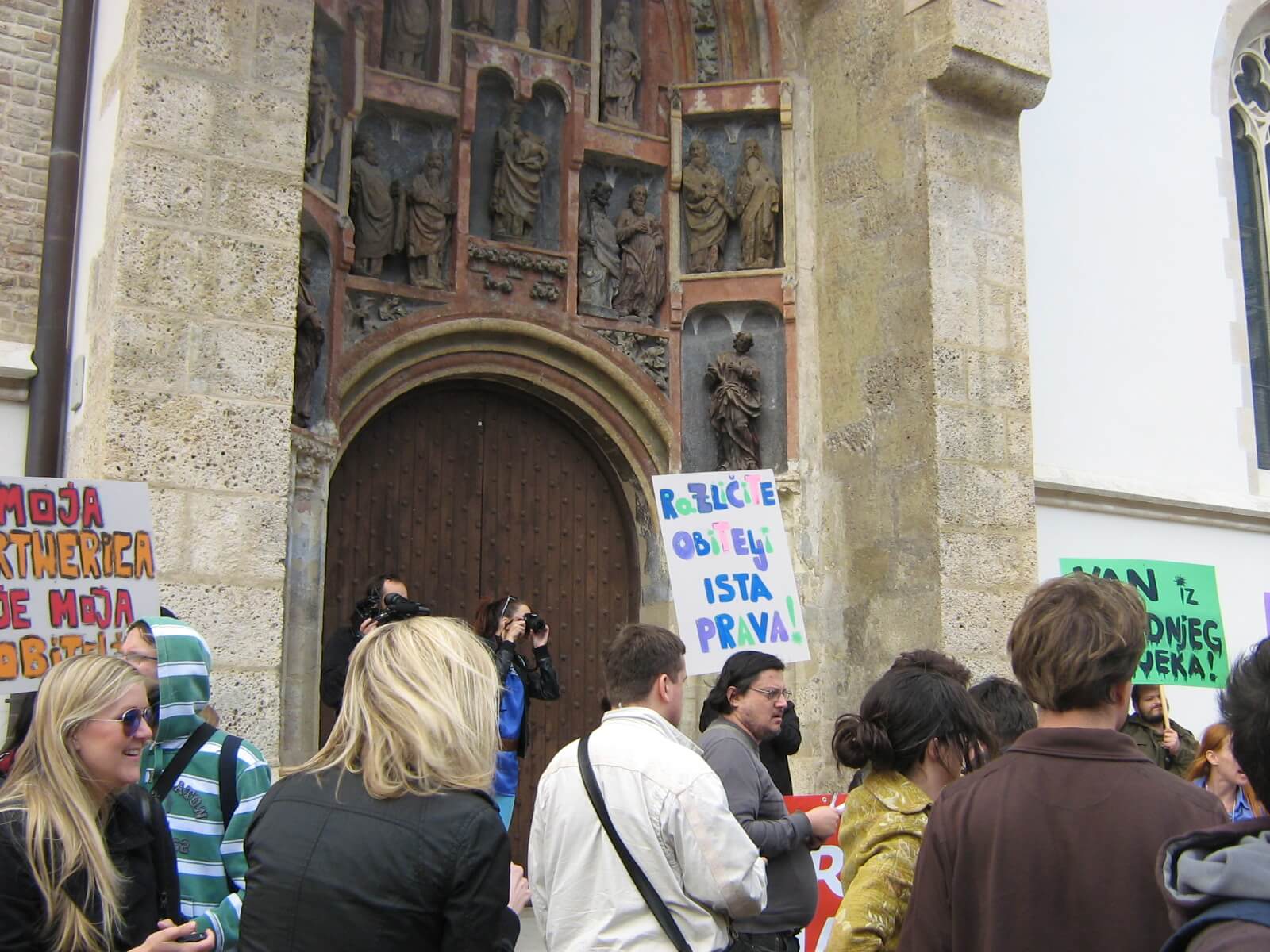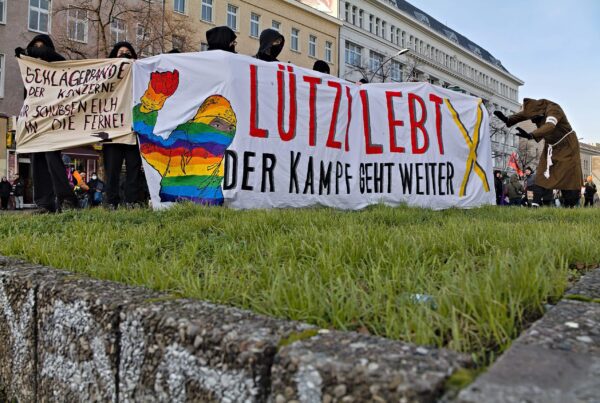“I propose to call it a performative sentence…it indicates that the issuing of the utterance is the performing of an action—it is not normally thought of as just saying something.”
Austin (How to Do Things with Words, 1962, p. 6/7)
In the quotation above, the renowned linguist J.L. Austin describes the key aspect of what is today known as a “speech act”: saying the words (e.g., “I promise”) makes the act (e.g., the promise) happen. Although other attendant circumstances are sometimes required (e.g., saying “I do” is an act of marriage only in a legally binding marriage ceremony), the performative sentence is generally intended as an act in itself. “Culture wars” strike me as precisely this type of performative utterance: the goal of saying that something is a “culture war” is to make it so.
Originally popularized by Hunter’s influential 1991 book Culture Wars: The Struggle to Define America, which analyzed the rise of the U.S. Christian Right and “moral controversies” as political issues, the term “culture wars” has long found a warm welcome among journalists looking for catchy headlines. Amid the intensified spread of “morality issues” to other parts of the world, it has also recently gained a second life in academia. Others in this series on Culture Wars have already warned of the analytical problems with the concept (“It is a hard concept to operationalize,” notes Isaacs) and its reductive nature (it “simplifies and distorts reality,” points out Breiding Hansen).
I agree with these objections, and I am uncomfortable using the phrase. What troubles me even more, however, is that I have come to think of “culture wars” as a concept whose main usage is rhetorical and performative: it aims to persuade us that a certain kind of reality exists and then to make it so. This thinking is similar to Breiding Hansen’s, whose earlier quote ends in an observation that this concept “also seems to end up reproducing…hostile relations.” In this text, I examine the proposition of “cultural wars” as a speech act through the examples of two of its derivations—concepts that suggest the same type of underlying conflictual binary—that have been used in the context of Croatian anti-gender mobilizations: “civilizational divide” and “worldview divide.”
The “Civilizational Divide” of the 2013 Marriage Referendum
To examine the “civilizational divide,” I draw on a study I conducted with my colleagues on the rise of anti-gender mobilizations targeting LGBT rights in Croatia, which culminated in the 2013 referendum on a constitutional definition of marriage as a union between a woman and a man. In this study, we note how, together with the framing of LGBT rights as human rights, the protection of LGBT rights in the 2000s—in the period when Croatia began its bid for EU accession—was presented as a civilizational marker that was supposed to show that Croatia belonged to Europe/the “West” and not to the Balkans/the “East.”
This “civilizational divide” between the West (Europe) and the East (the Balkans) has been a sore spot of Croatian cultural identity for a long time. It predates the country’s aspirations to join the EU; indeed, it was an integral element of the nation-building project of the 1990s, when Croatian political elites used “Balkanism” to construct the boundaries of what the Croats were not in their return to Europe from socialism.
So when LGBT rights become a political issue in the process of accession to the EU— at the period when the EU had already institutionalized LGBT rights as central to the European project—it was easy to equate belonging to Europe with the protection of LGBT rights. Accordingly, the activists for LGBT rights invoked the civilizational divide between the European, progressive Croatia and the Balkanic, backwards Croatia at various points in the 2000s. This was also the main rhetorical device employed by opponents of the 2013 marriage referendum. By voting against the amendment, this framing suggested, Croatian citizens could demonstrate that they belonged on the “right side” of the civilizational divide.
A similar framing of the European East-West civilizational divide notoriously backfired in some other Central and Eastern European (CEE) countries by feeding Eurosceptic “defiance” and turning this (flawed and problematic) construct on its head. Instead of being the source of (EU) disciplining, the East-West divide—and belonging to the East, not the deviant West—thus became a matter of cultural pride and national sovereignty in such countries as Poland or Hungary. Following this reification of the “East-West divide,” the debate became less about the issue at hand (i.e., LGBT rights) and more about where you belonged.
This is not quite what happened in Croatia, but only because the “civilizational divide” frame failed to anchor the belonging debate. Instead, the belonging debate converged upon a “worldview divide” (svjetonazorska podjela). Previously associated primarily with the political cleavage between right and left (which drew on the debates on the role of Croatian Nazi collaborators Ustasha and the communist resistance Partisans in World War Two), the concept of a “worldview divide” was successfully appropriated by the referendum initiators and its supporters to indicate a conservative-liberal cleavage on gender and sexuality values.
The Fall of “Civilizational Divide” and the Rise of “Worldview Divide” in the 2013 Marriage Referendum
To understand how this happened, an important difference between Croatia and many other CEE countries that embraced anti-EU rhetoric in response to the “Western” disciplining of belonging to Europe needs to be highlighted. In Croatia, the “East” remained closely associated with the Balkans and—not unimportantly—with its neighbor to the East, Serbia. Despite the growing importance of Euroscepticism and the strategic use of EU coercion or the European imperialism frame during the marriage referendum campaign, national cultural investment in the Croatian identity as a European identity held strong.
In this context, the referendum initiators (the citizens’ initiative In the Name of the Family—UIO), together with their mainstream right-wing allies and the Croatian Catholic Church (a key player in both Croatian nation-building and anti-gender mobilizations), preserved a multivalent approach to the European project and LGBT rights during the 2013 campaign, trying to simultaneously espouse both European belonging and anti-LGBT legislation.
Specifically, the referendum campaigners challenged the very idea that their demands made them non-European. While the opponents of the referendum relied primarily on aligning the protection or expansion of LGBT rights with (Western European) “civilizational” values, the referendum campaigners claimed that expansions of LGBT rights (such as marriage or parenting rights) were neither required by European standards nor human rights according to EU legislation. The UIO’s demand for a referendum on adding a definition of marriage as a union between a woman and a man to the Croatian Constitution (it was already defined thus in the Family Law) was therefore solely a demand for citizens to exercise their right “to say what they think and to determine how the society in which they live will look” and “a big step toward expanding the narrowed space for democracy in Croatia.”
The 2013 constitutional referendum was successful—but only because the voter turnout threshold for nationwide referendums of more than 50 percent of registered voters had previously been abolished to ensure the success of the EU membership referendum. Despite an intense six-month campaign that seemed to devour the public space in its efforts to mobilize citizens to vote “for” or “against,” only 37.9 percent of registered voters turned out, of whom 65.87 percent voted for the constitutional change. In other words, the referendum was won on the strength of roughly 25 percent of registered voters—hardly the “festival of democracy” that had previously been proclaimed by the UIO, and perhaps a bit of a hollow legal victory in light of the new Same-Sex Life Partnership Act that was already in the works. Although the UIO unsuccessfully attempted to prevent parliamentary discussion of this Act by claiming that it went against the majority vote on the referendum, the Life Partnership Act came into effect in 2014, giving same-sex partners most of the rights accruing to marriage, with the exception of adoption.
Nonetheless, the marriage referendum was a major symbolic victory for the anti-gender movement in Croatia because—the actual referendum numbers and legal consequences aside—the country that emerged after the referendum campaign felt internally divided on gender and sexuality issues. Following the months of constant conflict and polarization in the media, the entry of the campaign into universities and churches, and, if anecdotal evidence is to be trusted, fights in many households across Croatia, it seemed that the “(r)eferendum and referendum results showed an old and severe worldview divide within Croatia.” This was not a divide between European, “Western” Croatia and Balkanic, “Eastern” Croatia. Nor was it any longer just a divide between right-wing and left-wing Croatia (previously manifested in the debates on the role of Ustasha and the Partisans in World War Two). Rather, and crucially, this divide between “conservative” and “liberal” Croatia attached itself to the idea of a divide in “worldviews” about sexuality and gender.
This impression then became a key resource for further anti-gender mobilizations that attempted to make it so, as the case of mobilization against abortion demonstrates.
Reification of the “Worldview Divide”? The Case of Mobilization against Abortion
Abortion on demand until 10 weeks’ gestation has been legal in Croatia since 1978, when the Federal Republic of Yugoslavia passed the Law on Health Measures for Exercising the Right to Freely Decide on Birth to Children (NN 18/78), based on the introduction to the Yugoslav Constitution of a provision enshrining the right of individuals to freely decide on the birth of children in 1974 (only a year after the landmark Roe vs. Wade ruling that established the constitutional right to abortion in the US but has since been overturned).
The right to decide on the birth of children was quietly dropped from the 1991 Croatian Constitution (though the 1978 Law remained in effect), and the first decade of postsocialist Croatia was characterized by a strong re-traditionalization of society, considerable growth in the social and institutional power of the Catholic Church, and the ruling regime’s firm promotion of pronatalist family policies. Still, even in these circumstances, the legal standing of abortion on demand was not seriously called into question, despite occasional short-lived attempts to challenge the Yugoslav law or pass a new one.
In the early years of anti-gender mobilizations in Croatia—encompassing the 2006 sexuality education campaign, the 2012 campaign against embryo freezing, and the 2012-13 second mobilization against sexuality education—the issue of abortion often lurked in the background. Indeed, many of the activists involved in these campaigns were also affiliated with the citizens’ initiative Vigilare, founded in 2008 with the explicit mission to “defend the most basic human right—the right to life from conception and natural death,” and/or with the political party HRAST—Movement for a Successful Croatia, launched in late 2012 on the platform of “right to life” and “legal ban of abortion.”
Still, it was only after the marriage referendum campaign accomplished a mobilization (a “conservative revolution,” as the media liked to call it, both approvingly and disapprovingly) on a scale that (it is safe to assume) abortion alone would never have achieved that the tightly networked anti-gender activists involved in these various groups and campaigns saw a clear window of opportunity to seriously challenge the law on abortion. Thus, some two months into the marriage referendum campaign, abortion was finally explicitly announced as a possible next target by Krešimir Miletić, a prominent anti-gender activist (for Vigilare and the IOU) turned politician (with the HRAST—Movement for a Successful Croatia party), and then, following the referendum victory, reiterated by Vice John Batarelo, the Vigilare founder (and IOU affiliate), as an “issue that certainly must be opened in Croatia.” Indeed, the Croatian public has been witnessing anti-abortion campaigns and activities ever since, including the 2014 launch of the biannual prayer vigils “40 Days For Life” and the 2016 launch of the annual Marches for Life, as well as another —failed—attempt at a constitutional challenge in 2017.
During all these activities, the argument of the “worldview divide” that the marriage referendum supposedly exposed or revealed—as opposed to, say, constructed or, at least, reified—has been doing much of the heavy lifting to establish a sense that Croats are indeed deeply divided on gender and sexuality issues such as abortion. For instance, a lengthy public consultation comment prepared by Croatia’s first anti-gender citizens’ initiative (founded in 2006), The Voice of Parents For Children—GROZD, in opposition to the proposed Health (i.e., Sexuality Education) Curriculum in 2018 contains the claim that there is “no consensus in Croatian society” on a woman’s “right to choose,” which is, a few lines later in the text, linked to “gender ideology.”
I do not wish to debate in this text the “reality” of such claims as to a lack of consensus. As pointed out by Isaacs when talking about the role of both “demand” and “supply” in explaining “culture wars,” the answers to such questions are rarely straightforward, and the Croatian case of abortion testifies to this complexity. For example, one recent study has shown the majority to believe that women should have a right to choose (2019 public opinion poll by IPSOS with a nationally representative sample) and another has found this to be a majority view across political party affiliations (2022 HRrejting poll).
At the same time, Croatia has a history of both obstruction and stigmatization of women legally demanding abortion, and a different survey question—on whether “abortion can be justified”— produced relatively low agreement in the European Values Study (EVS) in 1999, 2008, and 2017. While it is worth highlighting here that the general trend shows rising support for abortion, it is equally important to note (see Figure 1) that this general trend is brought down by the youngest generations—a finding to which, I believe, it is not irrelevant that Catholic religious instruction has been given in schools since 1991, with the latest statistics indicating that over 80 percent of students in primary and secondary schools take these classes. Again, therefore, the issue of supply and demand makes the question of consensus difficult to answer in a straightforward way.
Figure 1. Agreement with the statement “Abortion can be justified,” on a scale from 0 (never) to 100 (always)

Source: European Values Study (EVS), data for Croatia from 1999, 2008, and 2017 wave, as presented in the maps for the Atlas of European Values.
This difficulty aside, I argue that statements such as the one about the lack of consensus—which is aligned with a “worldview divide” argument—primarily serve as speech acts. Whether they are true or not is beside the point; what they intend to achieve is to persuade the public that the divide is real, and thus “choosing” a side is an important matter that is less about the issue itself than about where you belong. In the explicit words of the Vigilare founder Baterelo posted on the Vigilare portal in 2022 (in a post that is linked as the “About Us” section), when it comes to “moral depravity, destruction of the family, abortion, and humiliation of the homeland,” there is a clear division between us, “conservatives” who are “faithful Catholics,” and them, “liberals” who are “militant secularists.” By supporting abortion, this framing suggests, individuals put themselves on the “wrong side” of national belonging.
Conclusion
I understand both the “civilizational divide” and the “worldview divide” discussed in this text as derivations of the “cultural wars” concept. They rest on the same type of conflictual binary, one that is primarily concerned with the construction of (non)belonging. The purpose of this (non)belonging construct is to mobilize—to persuade the public that sides must be chosen and the struggle engaged. Whether the divide or the conflict were there to start with—or whether they are “real”—is beside the point. As one of the main tenets of social constructivism posits, if people perceive the situation as real, it is real in its consequences (Thomas theorem). This is why I understand “cultural wars” to function as a speech act—in saying it is so, the main intent of various actors and activists in their use of the concept is to make it so. We as academics must recognize this and analyze the concept accordingly. We should approach “culture wars” exclusively as a rhetorical device that serves a mobilizational purpose centered around the construction of (non)belonging. Within this framework, we need to understand who uses the concept (or its derivatives); how; and with what consequences—both intended and unintended—in terms of persuading and mobilizing the public. But we should not reify “culture wars” or any of its derivatives by wasting our energies on attempts to measure or operationalize the term or on discussing its analytical value in representing reality.
In presenting the case of mobilization against abortion, I draw on the data collected for the project Sense AGENDa which has received funding from the European Union’s Horizon 2020 research and innovation programme under the Marie Sklodowska-Curie grant agreement No 101025722.
Photo: “Zagreb Marriage Equality march” by Gospodar svemira licensed under CC BY 3.0.







